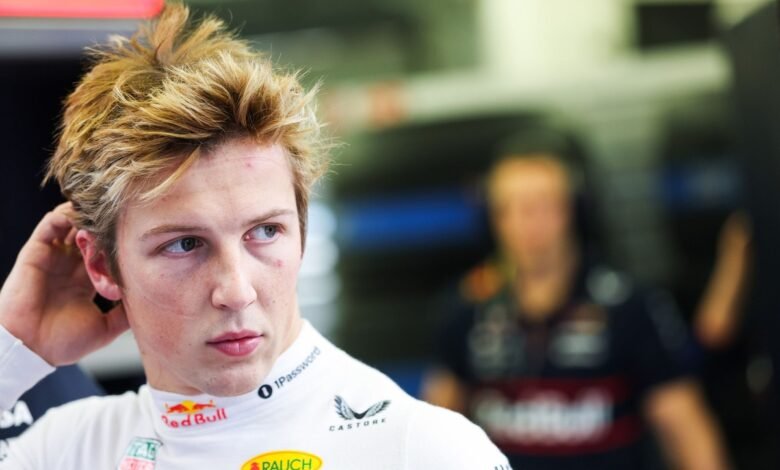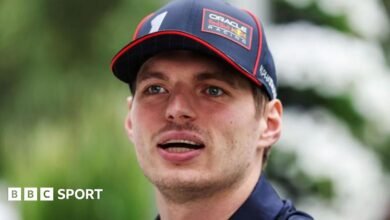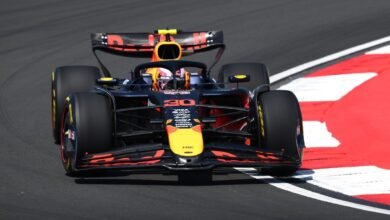The damaging message Red Bull has sent with Lawson-Tsunoda swap

Christian Klien, Scott Speed, Sebastien Bourdais, Daniil Kvyat (twice), Pierre Gasly, Nyck de Vries, Daniel Ricciardo – the list of drivers being replaced mid-season by Red Bull or its sister team is lengthy. As of this week, Liam Lawson joins that group and, in a way, he’s even a record-breaker: no Red Bull-contracted driver has been dropped faster. That Lawson was given just two rounds with the senior team is remarkable, even by Red Bull standards, particularly when considering both tracks were new to him.
Lawson’s demotion: Ruthless or protective?
When Motorsport.com caught up with Helmut Marko in the Shanghai paddock last weekend and put Lawson’s comments to him – “I need more time in the car, but I know I don’t have it” – Marko simply replied: “He’s right.”
It might not have been the answer Lawson was hoping for, but speaks volumes about Red Bull’s philosophy: open and straightforward, but also brutal and mentally challenging for drivers. Most of the names on the list can relate to it: early-morning phone calls, mid-season exits, and even de Vries finding out months after his dismissal that Marko called him the “biggest mistake” of his career.
Red Bull isn’t afraid to act quickly when things don’t go to plan, with Sergio Perez being the only exception in recent years. Red Bull showed uncharacteristic patience with the Mexican, but that was largely due to substantial backing from his sponsors. As Lawson’s brief stint shows, the real problem may not lie with the driver, but with a notoriously difficult car – something Max Verstappen has repeatedly alluded to when Perez’s performances were discussed in the media.
Lawson’s removal from the Red Bull seat is perhaps the most extreme example to date, although it can be seen differently as well. Christian Horner stressed in China that Red Bull has “a responsibility” towards the New Zealander. It could be interpreted as giving him more time in the main team, but also as removing him from an impossible situation – dealing with the RB21 and trying to keep up with Verstappen in equal machinery. Putting him back into a more forgiving environment – both in terms of pressure and the car – might save his F1 career long-term.
The Antonelli example: TPC testing and playing the long game
Red Bull’s way of dealing with junior drivers differs from most F1 teams. The way Mercedes has brought Andrea Kimi Antonelli in is a prime example. When the young Italian was announced at Monza, team boss Toto Wolff said: “Five minutes after Lewis told me he that was going to Ferrari, I already made up my mind.”

Andrea Kimi Antonelli, George Russell, Toto Wolff, Team Principal and CEO, Mercedes-AMG F1 Team
Photo by: Mercedes AMG
The reality was a bit different. Just a week prior to that in Zandvoort, Wolff had openly talked about the possibility of luring Verstappen to Mercedes, but his words in Monza were all about perception and the message of supporting his own drivers. Once the Verstappen option had faded for 2025, Mercedes closed ranks around Antonelli, shielding him from all pressure and media speculation.
Beyond this messaging, Mercedes backed up its words with extensive preparation. Antonelli covered over 9,000km in Testing of Previous Cars (TPC) sessions, whereas Lawson only got a filming day in Abu Dhabi and a Silverstone test in the RB20. During the post-session test at the Yas Marina Circuit he surprisingly drove the Racing Bulls car, with Yuki Tsunoda and Isack Hadjar in the Red Bull cars – even though it was clear by then that Lawson would get the nod for the second Red Bull seat.
While Lawson wasn’t a total rookie with 11 grands prix under his belt, the lack of an extensive TPC program is still an interesting factor, especially given how effective those have been for others. Piastri greatly benefited from his extensive testing with Alpine (even if McLaren ultimately capitalised on it), and Ferrari gave Hamilton a taste of Maranello machinery well ahead of his 2025 debut.
Given how specific the Red Bull car characteristics are – “a [computer] mouse with sensitivity on 100%” as Alex Albon put it – some extra seat time in cars with that philosophy wouldn’t have hurt Lawson.
The Red Bull program and a changed landscape
For years, Red Bull’s biggest edge in driver development was speed: how quickly it could bring talent into F1. Seven of the current 20 drivers on the grid came through Red Bull’s system. It’s an impressive stat and speaks to the opportunity that the brand offers. But the model is high-risk, high-reward. Even from karting, Red Bull favours quick transitions into single-seaters, often with the pressure to deliver straightaway – even though the step from karting to single-seaters is a difficult one.
Furthermore, times have changed a bit. Red Bull was once the only team investing this heavily in junior talent, but this season the F1 grid features no fewer than six rookies. More teams have started to bet on young talent, with Oliver Bearman’s Ferrari debut in Jeddah serving as a wake-up call. An F2 driver that was struggling with Prema at the time stepped into a Ferrari and delivered a near-flawless weekend. It gave teams like Mercedes and Sauber the belief that backing youth for 2025 would be the right thing to do – especially if properly prepared.

Oliver Bearman, Scuderia Ferrari
Photo by: Mark Sutton / Motorsport Images
In this new reality, Red Bull no longer has a monopoly on fast-tracking talent to F1. Alongside the Ferrari Driver Academy – responsible for Charles Leclerc – there is now serious investment in driver development at Mercedes, Alpine, McLaren and Williams.
Yes, Red Bull still has the best track record and has produced generational talents like Sebastian Vettel and Max Verstappen – even if Verstappen was signed just before his F1 promotion and not really nurtured by the brand’s academy. But since the Verstappen and Carlos Sainz line-up at Toro Rosso in 2015, many of the brightest talents have emerged elsewhere. Top-tier prospects climbing the ladder have tended to come through at other programs: Leclerc (Ferrari), Norris (McLaren), Russell and Antonelli (Mercedes), Piastri (Alpine and then McLaren).
When it comes to Red Bull, Arvid Lindblad is rated highly and Hadjar has made a good impression so far, but the developments in recent years do raise the question: is Red Bull still the best place for young talent, is it the benchmark it used to be?
Does perception matter more than ever before?
In today’s hyper-competitive landscape of chasing young talent, Red Bull must try to be the most attractive path to F1. That applies not just to how quickly it can promote drivers to F1 with two teams on the grid, but how effectively it nurtures and supports them beyond that promotion. Dropping a driver from the main team after just two race weekends sends a message that will not resonate well with the next generation.
If young talents in karting have interest from various junior programs, examples like the Lawson decision are likely to be part of their considerations. It is that perception Red Bull has to take into account to some extent, especially if Verstappen decides to leave Red Bull one day. After all, that’s when a strong junior program could be invaluable.
Red Bull used to have that succession plan in place, but there’s work to be done to restore past glories – not just on track and in the spotlight of F1, but also on the ladder that should take young talent there. As the grid evolves and Red Bull’s rivals refine their pathways to F1, perception matters more than ever. Weeks like this may not help.
In this article
Ronald Vording
Formula 1
Liam Lawson
Yuki Tsunoda
Red Bull Racing
Racing Bulls
Be the first to know and subscribe for real-time news email updates on these topics
Subscribe to news alerts




